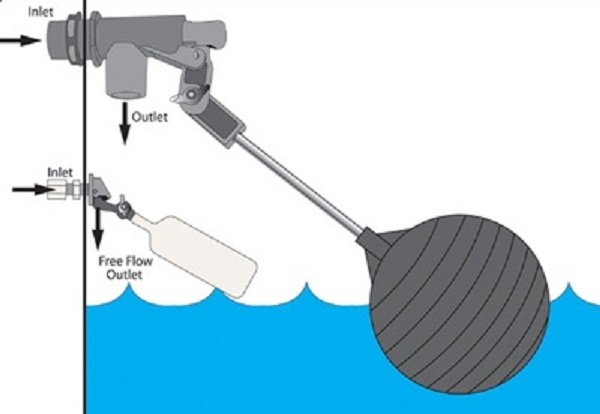Valves are necessary in water supply system, in order to regulate the flow of water and to minimize the wastage of water. Valves either start/stop the flow of water or control (throttling) the speed and capacity of water or direct the flow in one direction only.

Float valve or a ball valve automatically regulates the flow and maintains constant level in a service reservoir or elevated tank or stand pipe (pipe that connects main supply to tap directly). It consists of a valve connected to a hollow sealed float (ball) by means of a rigid bar, which is mounted on the top of the tank. The valve is connected to the incoming water supply.
Function of Ball Valve
It works on principal of maintaining the level of free water surface. A float valve allows water to flow until a predetermined level is reached. Once water reaches predetermined level, float will rise with water due to buoyancy and stop the flow of water. As water level drops the valve will open to refill the tank.
Courtesy – Plastic Water Tanks
In a house, float valve is installed in water storage tank and flush tanks, so that water flow is stopped automatically once the tank is filled up with water.
